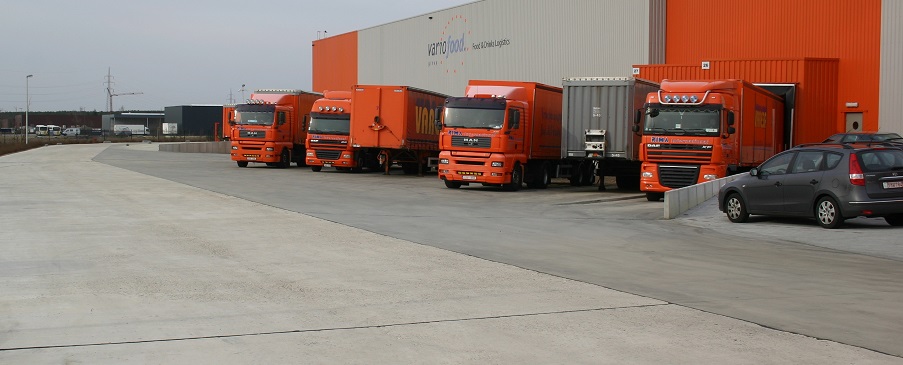Internal industrial floors and external industrial pavements
Concrete is extensively used for the construction of internal floors of factories and warehouses as well as for external pavements such as parking, delivery and storage areas and hardstandings for heavy use in port and airport areas. When designed and constructed properly, concrete floors and external pavements will provide excellent serviceability over a long period.
Some of concrete’s advantages are :
- the rigidity of the slab which enables to spread imposed loads over a sufficiently large area of the underlying layers so that any deflections are small;
- a hard-wearing surface that can be textured to provide skid resistance or that can be floated and trowelled to provide a smooth finishing;
- its resistance to petroleum-based products.
The different types of loadings consist of:
- wheel loads of heavy-goods vehicles and industrial vehicles such as lift trucks, straddle carriers and reach stackers;
- concentrated static loads such as those exerted by posts of storage racks or stacked containers;
- distributed loads due to material stacked on the floor.
Generally, the pavement consists of plain concrete slabs which can be:
- unreinforced;
- reinforced with only distributed steel (“shrinkage and temperature steel”);
- structurally reinforced.
Both steel-welded fabrics as steel fibres are used as reinforcement.
There are many common factors in the design and construction of internal and external concrete slabs, but there are also some significant differences.
The main difference is that external pavements are exposed to climatic conditions like daily and annual temperature changes, rain, frost, de-icing salts and freeze-thaw effects. This implies more severe specifications of the concrete mix in terms of binder content, water-cement ratio and type of aggregates and should result in a higher quality of the hardened concrete characterized by strength, water absorption and resistance to scaling.
Internal floors but also pavements subject to moderate loads are very often constructed on the ground. In that case, soil conditions play an important role in the design. For heavily loaded surfaces, an adequate base layer – either bound or unbound – is needed.
Other particular specifications may deal with surface level and regularity, surface finishing, joint patterns or jointless pavements.
More information can be found in numerous national documents of which some are listed below:
- ROM 4.1-94
GUIDELINES FOR THE DESIGN AND CONSTRUCTION OF PORT PAVEMENTS - Technical Report no. 63
Guidance for the Design of Steel-Fibre-Reinforced Concrete
Report of a Concrete Society Working Group – www.concrete.org.uk - Technical Report no. 66
External In-situ Concrete Paving
Report of a Concrete Society Working Group – www.concrete.org.uk - Concrete hardstanding – Design Handbook
Britpave, 2005 – www.britpave.org.uk - Slab Thickness Design for Industrial Concrete Floors on Grade
by Robert G. Packard – Portland Cement Association - Concrete industrial floors on the ground
by Louis R. Marais & Bryan D. Perrie – Portland Cement Institute, Midrand - Bedrijfsverhardingen en bedrijfsvloeren van beton
by M. Leewis, H. Monster, A. van der Vlist – Vereniging Nederlandse Cementindustrie - Dallages – Conception, calcul et exécution
CSTB – http://boutique.cstb.fr


